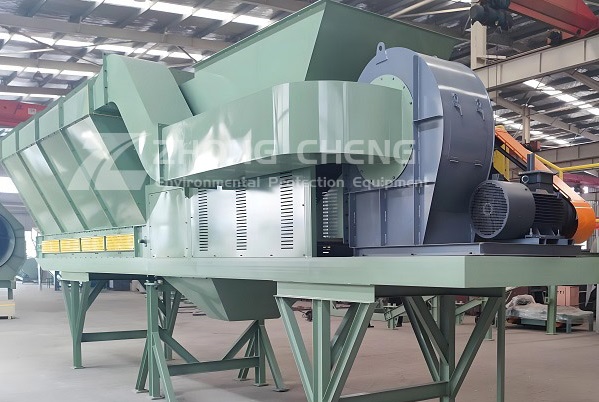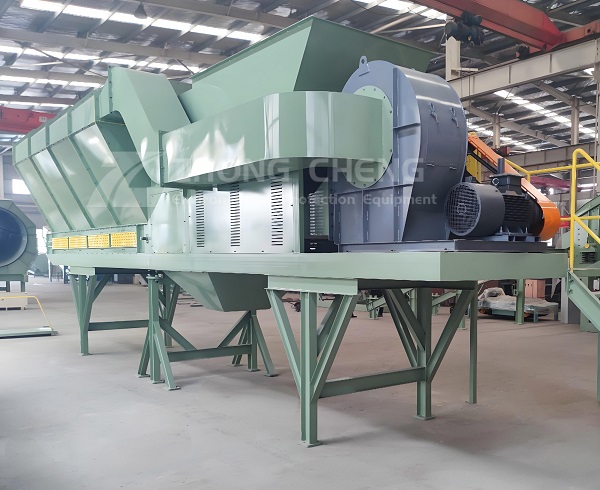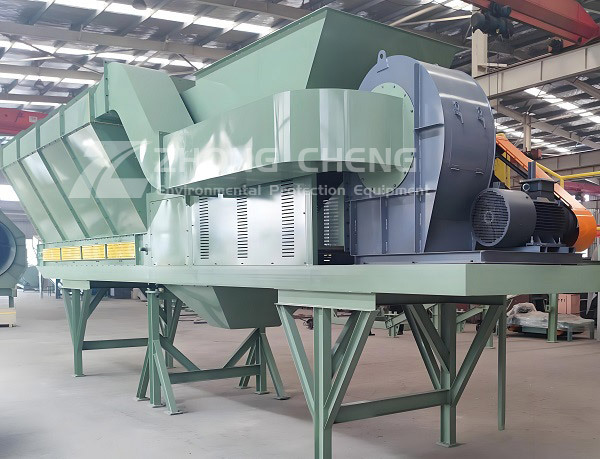The wind sifter separator is a mechanical device used for grading, screening and separation of granular materials. The following is a detailed introduction to it:

Wind Sifter Separator
A. Working principle of wind sifter separator
The working principle of the wind sifter separator is mainly based on the differences in the movement characteristics of different substances in the airflow. When the mixed material enters the sorting chamber of the wind separator, the airflow generated by the fan flows at a specific speed and direction. The material is screened by mechanical movement and sieves to meet different particle size requirements. During the screening process, materials of different particle sizes will pass through different sieve holes, while materials of smaller particle sizes can be blown away by wind. Specifically, light materials with low density, large surface area and large wind resistance (such as plastic film, paper, foam, etc.) in the material will be blown up by the airflow and move in the direction of the airflow; while heavier materials will overcome the lifting force of the airflow due to gravity and settle along different paths, thereby achieving the purpose of separating light and heavy materials.
B. Structural composition of air separation and screening machine
Air separation and screening machine usually consists of the following parts:
1. Feeding system: responsible for evenly and stably conveying the mixed materials to be sorted to the sorting area of the air separator, ensuring that the flow rate and distribution state of the materials when entering are controllable, laying the foundation for subsequent precise sorting.
2. Sorting chamber: the core component of the air separator, its internal structure has been carefully designed, including airflow guide device, baffle, etc. The airflow guide device is used to control the speed, direction and distribution of the airflow, so that the material can fully contact with the airflow in the chamber and produce different motion trajectories according to its own characteristics; the baffle helps to further adjust the flow direction and separation effect of the material to prevent disordered mixing of the material.
3. Fan system: produces a stable and adjustable airflow, which is the power source for the operation of the air separator. By adjusting the parameters such as the fan speed and blade angle, the intensity and characteristics of the airflow can be changed to meet the sorting needs of different materials.
4. Discharge system: including light material discharge port and heavy material discharge port, respectively, to guide the light and heavy materials after sorting out of the air separator for subsequent collection, packaging and further processing. The design of the discharge system focuses on the smooth discharge of materials, avoiding material blockage, and ensuring the continuous operation capacity of the air separator.
5. Dust removal device: used to collect and treat dust generated during the air separation process to prevent dust from being blown out and causing environmental pollution, and it is also beneficial to protect the health of operators and the normal operation of equipment.

Wind Sifter Separator
C. Application field of air separation screening machine
Air separation screening machine can be widely used in metallurgy, mining, building materials, chemical industry, electricity, machinery, light industry and other industries. Specific applications include but are not limited to:
1. Mining field: In the process of ore mining and processing, the original ore is often accompanied by a large amount of gangue and other impurities. The air separator can effectively separate the light impurities in the ore according to the density difference between the ore and the gangue, improve the grade of the ore, and reduce the cost and difficulty of the subsequent mineral processing process.
2. Waste treatment industry: The composition of urban domestic waste is complex and diverse. The wind separator can quickly separate light recyclables such as paper, plastic, and fabric from heavy components such as sand, glass, and metal.
3. Industrial waste recycling: Waste generated in various industrial production processes, such as waste plastics, metal scraps, rubber products, etc., are usually mixed with other impurities. The wind separator can separate different components according to the material and density differences of the waste, so that valuable materials can be recycled and reused.

Wind Sifter Separator
D. Characteristics and advantages of wind separators
1. High efficiency: It can process a large amount of mixed materials in a short time, which greatly improves the sorting efficiency compared to traditional manual sorting or simple mechanical sorting methods.
2. High precision: With the precise grasp of material characteristics and fine adjustment of airflow parameters, the wind separator can achieve high-precision separation of light and heavy materials.
3. Strong adaptability: It can sort materials of different types, different particle size distributions and physical properties, and adapt to various complex material compositions by adjusting the operating parameters and structural components of the equipment.
4. Environmental protection and energy saving: The design focuses on energy utilization efficiency and dust pollution control. By optimizing the airflow system and equipping efficient dust removal devices, the energy consumption and dust emission of the equipment are reduced.
5. High degree of automation: With a high degree of automated operation capability, it can realize continuous and stable operation processes, reducing manual intervention and labor intensity.
PS: The wind sifter separator plays an increasingly important role in modern industrial production with its high efficiency, precision, strong adaptability, environmental protection, energy saving and high degree of automation.
Save Time! Get A Detailed Quotation Quickly.
